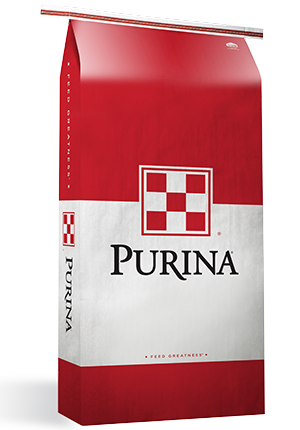
Better Goat Milk Quality, Better Kid Growth
Wellness : Nutrition
Wellness : Health

Getting young goats off to a fast, healthy start begins with high-quality milk from the doe. Increasing the milk's overall fat content can result in improved rate of gain for kids.
Fat has more energy than carbohydrates, and kids can digest fat more efficiently to grow and perform better at an early age.
The quality of a doe’s milk directly correlates to the nutrition and mineral fed before and after kidding. Grazing or feeding high-quality stored forages and supplementing the correct balance of fats and carbohydrates translates into better milk production for the doe.
Here are four tips to help increase milk production and improve kid performance:
Supplement goats for better milk production
Research has shown that supplementing fat ahead of kidding directly correlates to improved milk quality, which in turn supports kid performance.Feeding does a supplement with 4-5% fat content, like Purina® Goat Charge Concentrate, three weeks to a month before kidding helps optimize the amount of fat passed onto the kid later.
Supplementation needs to maintain proper milk production do decrease as forage quality increases. However, most does are likely grazing dormant grasses or hay before kidding in the late winter or spring. If does graze forage low in protein and fat, supplementation is necessary to maximize goat milk quality.
Factor in multiple births
Does carrying multiple kids have extra nutrient requirements to support milk fat production. A pregnancy ultrasound can provide some insight into whether a doe has higher nutrient needs. Should two or more kids be detected, consider moving the doe into a group of other does expecting multiple kids.The multi-kid herd can receive even more supplemental fat and high-quality forage, so the does can adequately care for their kids post-kidding. It also benefits the doe since she can maintain her body condition easier with additional nutrients.
Following kidding, monitor your kids visually to see if they have full bellies. If they look like they are hollow in the flank and not adding weight, it could be a sign of nutritional problems. One twin may need to be pulled off early or does could need more supplemental fat to provide the adequate milk production levels to support kid growth.
Don’t cut corners with goat mineral
Quality mineral is by far the most important thing to feed goats. When goat mineral is fed at specified rates, it keeps everything in balance for does and kids.Goat mineral must have a degree of bioavailability to ensure minerals are properly absorbed and used by the doe. A higher amount of bioavailability in your mineral product allows not only for better absorption by the doe, but also for the kid as needed minerals and vitamins are passed though the milk to the kid.
Look for a mineral high in organic zinc, manganese, cobalt and copper. These four minerals impact does’ metabolism, affecting the amount and quality of milk produced. They also provide higher bioavailability to support overall milk production. Purina® Goat Mineral offers the right balance of vitamins and bioavailable minerals to keep does, and their kids, performing at their optimum.
Pull back at weaning for does, ramp up kids
Healthy, well-fed kids can gain up to 1/3 or 1/2 lb. per day while on milk. As kids reach higher weights at six weeks old, they can begin transitioning onto a creep feed and start grazing. At this point, their rumen has started to develop and can fully utilize nutrients from a forage-based diet.Start by introducing creep feed at five weeks. It takes approximately five to seven days for kids to start getting fully interested in creep feed following its introduction. The creep feed should be high in protein, like Purina® Goat Grower 16 Plus Up DQ.0015, which contains 16% crude protein.
As kids receive more of their nutrients from forage and mineral, does require less supplementation as milk production needs decrease. Supplementation for does can be ramped down between six and eight weeks after kidding.
When does are supplemented too long, it can result in issues like mastitis. Phasing out supplementation in the lead up to weaning will aid in the overall longevity of the herd. Ideally, wean kids at eight weeks old.
Providing a high-quality goat nutrition program before, during and after kidding helps ensure your does will produce high-quality, high-fat milk to support optimal kid growth and performance.
Does your goat nutrition program stack up? Find out with a Proof Pays trial.



